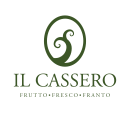
“We have all grown up here and we have watched the olive trees getting better year after year. Nowadays, on Sundays, children still run across the fields and taste the plants that Grandmother picks up for cooking. At lunch time the table is under the canopy, laid out for a good meal: if everything goes well the new oil will be on the table. You sit down, you taste it, you look at the view and taste the flavour of what you see.”
Viewpoints
We are not looking for the maximum yield, but for a good one: quantity is not as important as quality. If the olive tree gives its fruit, it means that it was well pruned, that the right branches were cut, that it received sufficient light and air, and that the ground was well cleaned, not too much though, in order not to jeopardise the vital balance of the surrounding biodiversity, which certainly contributes to the good taste of the oil. That is why weedkillers and chemical fertilizers have no reason to be used here.
The shape of the olive trees cannot only be useful for the harvesting of olives because also beauty has its value – sometimes you sacrifice the natural grace of the trees by pruning them for the ease of harvesting. The olive tree, if inadequately pruned, may suffer and this is clearly shown in the way it grows.





